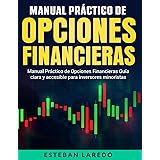The financial landscape in recent times presents a fascinating paradox, with major asset classes like gold, Bitcoin, and even broad stock markets reaching unprecedented highs. However, this apparent prosperity often feels fragile, overshadowed by growing economic anxieties and clear signs of distress among consumers. This article delves deeper into the complex factors discussed in the accompanying video, exploring how economic fears and shifting market dynamics could shape the investing outlook for gold and Bitcoin as we approach 2025.
The core issue revolves around the sustainability of these market peaks when underlying economic indicators signal trouble. We will analyze the impact of consumer debt, currency devaluation, and evolving institutional investment patterns on the future trajectory of these key assets.
Understanding Market Fragility Amidst All-Time Highs
Currently, investors are witnessing a remarkable phenomenon: gold trading above milestones, Bitcoin nearing its all-time highs, and stock markets consistently setting new records. This surge in asset values might suggest a robust economy, but a closer inspection reveals significant vulnerabilities lurking beneath the surface.
A concerning trend is the rise in consumer financial distress, evident in increasing credit card delinquencies, auto loan missed payments, and student loan defaults. These indicators suggest a considerable portion of the population is struggling financially, indicating a disconnect between market performance and household stability.
The Impact of Dollar Devaluation on Asset Prices
One primary driver behind elevated asset prices, as highlighted in the video, is the ongoing devaluation of the dollar. The DXY, or Dollar Index, has reportedly declined over 10% this year alone, significantly diminishing the purchasing power of the currency.
This devaluation means that assets priced in dollars naturally appear more expensive, often creating a perception of growth that is actually an inflation of nominal values. Such a scenario suggests that the market’s strength could be largely window dressing, obscuring fundamental weaknesses within the economy.
Gold’s Resilient Performance in an Era of Economic Fears
For centuries, gold has served as a reliable store of value, particularly during periods of economic uncertainty and currency instability. The recent surge in gold prices, reaching significant milestones as mentioned by the speakers, underscores its enduring appeal as a safe-haven asset.
Many investors, often referred to as “gold bugs,” turn to precious metals when they perceive a decline in the value of fiat currencies or a heightened risk of inflation. Historically, gold has demonstrated a negative correlation with the US dollar, meaning its value often rises when the dollar weakens.
Why Gold Remains a Critical Portfolio Component
The continuous economic fears, coupled with persistent inflation concerns and geopolitical tensions, solidify gold’s position in diversified investment portfolios. It acts as an insurance policy against systemic risks, preserving capital when traditional financial markets face significant downturns.
Central banks globally have also increased their gold reserves in recent years, further signaling a strategic shift away from over-reliance on single currencies. This institutional demand provides a strong foundation for gold’s valuation, despite short-term price fluctuations.
Bitcoin’s Bull Market: Institutional Dynamics and Future Cycles
Bitcoin has captivated the financial world with its volatility and spectacular growth cycles, recently approaching all-time highs. The video discusses expectations for a continued Bitcoin bull market, potentially extending into late 2025, echoing patterns from previous cycles in 2013, 2017, and 2021.
However, an interesting observation from a recent Bloomberg report notes a slowdown in buying from corporate treasury firms, a key institutional demand source. This suggests a potential pause in the institutional accumulation that has significantly fueled prior rallies.
Analyzing ETF Flows and Institutional Investment in Crypto
The flow of capital into Bitcoin Exchange Traded Funds (ETFs) serves as a crucial indicator of broader institutional interest. While ETF flows reportedly experienced a slowdown over the summer months, a pick-up is anticipated in the fall, reflecting renewed institutional engagement.
Despite temporary dips, the long-term trend points towards increasing institutional adoption of cryptocurrencies, especially Bitcoin. The approval of spot Bitcoin ETFs in various jurisdictions has provided regulated pathways for traditional investors to gain exposure, thereby integrating crypto more deeply into the mainstream financial system.
Navigating the Market’s Future: Strategies for Informed Investors
The current market environment, characterized by asset highs alongside economic anxieties, demands a thoughtful approach from investors. Understanding the nuanced interplay between gold, Bitcoin, and economic fears is crucial for making informed decisions.
Diversification remains paramount; allocating capital across different asset classes can mitigate risks associated with currency devaluation and market volatility. Many financial experts advise against concentrating investments solely in one asset, advocating for a balanced portfolio that includes precious metals and digital assets.
Prudent Investing Outlook for Gold, Bitcoin, and Beyond
As we look towards the investing outlook for 2025, investors should consider the macroeconomic factors driving market movements, rather than focusing purely on asset price momentum. Evaluating the impact of global liquidity, interest rate policies, and geopolitical stability is essential for predicting future trends.
For those interested in the market’s future, a balanced perspective acknowledging both the potential for growth in alternative assets like gold and Bitcoin and the underlying economic fragility is key. This strategic foresight helps investors to adapt their portfolios, safeguarding wealth and capitalizing on emerging opportunities in an ever-evolving global economy.







